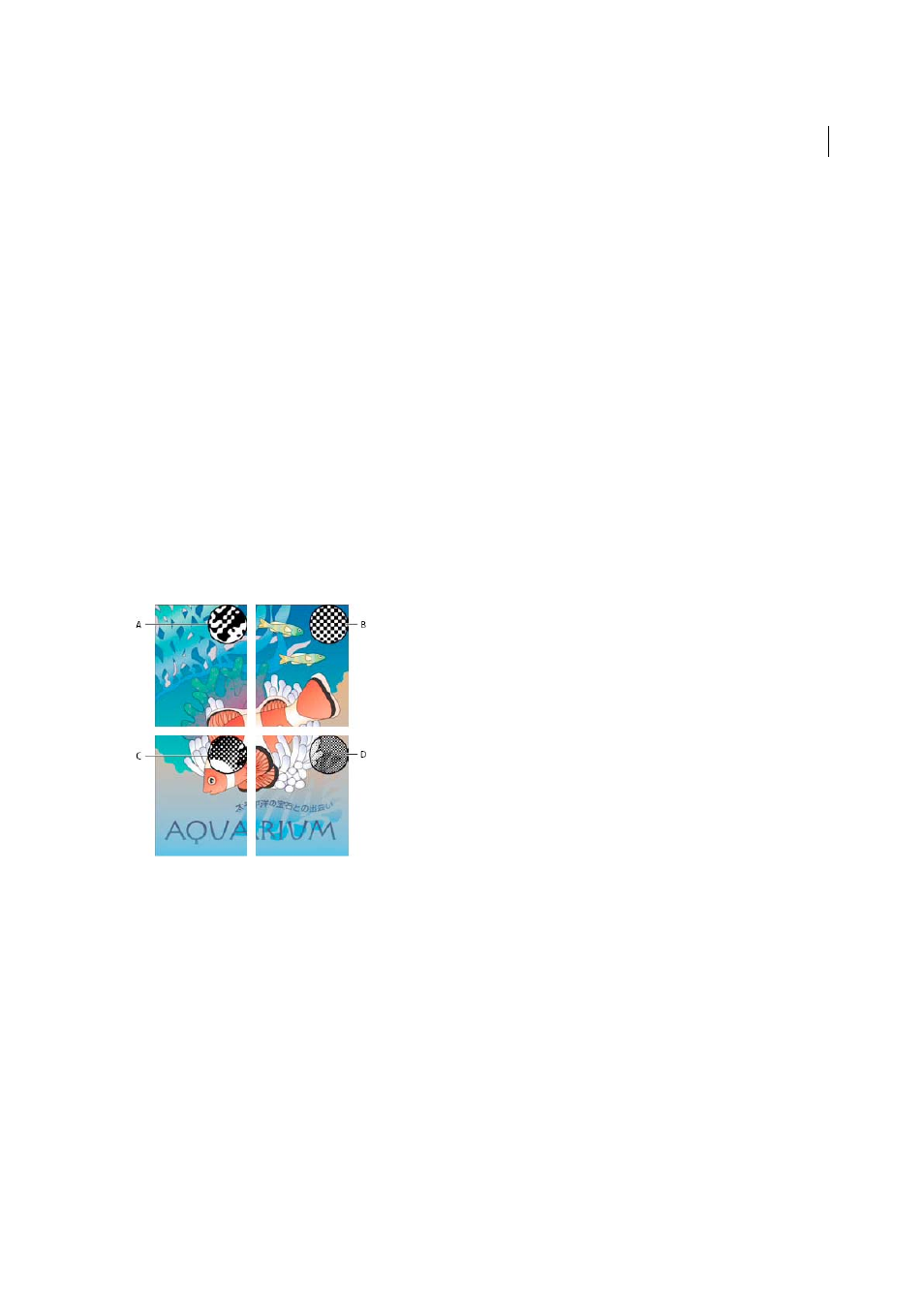Specify halftone screen frequency (acrobat pro) – Adobe Acrobat XI User Manual
Page 432

425
Printing
Last updated 1/14/2015
Note: When printing to a printer that supports overprinting, make sure that this option is unselected, so the native
overprinting capabilities of the printer are used.
Use Maximum Available JPEG2000 Image Resolution
Controls how resolution progression information, if present, is
used when generating PostScript. When selected, the maximum resolution data contained in the image is used. When
unselected, the resolution data is consistent with the resolution settings on the Transparency Flattening panel.
Ink Manager
Modifies the way inks are treated while the current PDF is open. See
.
Specify halftone screen frequency (Acrobat Pro)
In commercial printing, continuous tone is simulated by dots (called halftone dots) printed in rows (called lines or line
screens). Lines are printed at different angles to make the rows less noticeable. The Screening menu in the Output
section of the Print dialog box displays the recommended sets of line screens in lines per inch (lpi), and resolution in
dots per inch (dpi), based on the currently selected PPD. As you select inks in the ink list, the values in the Frequency
and Angle boxes change, showing you the halftone screen frequency and angle for that ink.
A high line-screen ruling (for example, 150 lpi) spaces the dots closely together to create a finely rendered image on the
press; a low line-screen ruling (60 lpi to 85 lpi) spaces the dots farther apart to create a coarser image. The size of the
dots is also determined by the line screen. A high line-screen ruling uses small dots; a low line-screen ruling uses large
dots. The most important factor in choosing a line-screen ruling is the type of printing press your job will use. Ask your
service provider how fine a line screen its press can hold, and make your choices accordingly.
A 65 lpi: Coarse screen for printing newsletters and grocery coupons B 85 lpi: Average screen for printing newspapers C 133 lpi: High-quality
screen for printing four-color magazines D 177 lpi: Very fine screen for printing annual reports and images in art books
The PPD files for high-resolution imagesetters offer a wide range of possible screen frequencies, paired with various
imagesetter resolutions. The PPD files for low-resolution printers typically have only a few choices for line screens,
usually coarser screens of between 53 lpi and 85 lpi. The coarser screens, however, give optimum results on
low-resolution printers. Using a finer screen of 100 lpi, for example, actually decreases the quality of your image when
you use a low-resolution printer for final output.
Follow these steps to specify halftone screen frequency:
❖
In the Output panel of the Advanced Print Setup dialog box, do one of the following:
• To select one of the preset screen frequencies and printer resolution combinations, choose an option from the
Screening menu.
• To specify a custom halftone screen frequency, in the ink list, select the plate to be customized, and then enter
the lpi value in the Frequency box and a screen angle value in the Angle box.